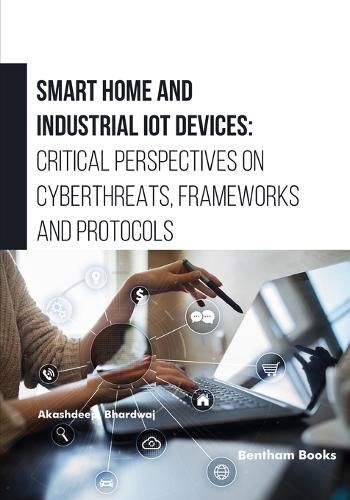Readings Newsletter
Become a Readings Member to make your shopping experience even easier.
Sign in or sign up for free!
You’re not far away from qualifying for FREE standard shipping within Australia
You’ve qualified for FREE standard shipping within Australia
The cart is loading…






Smart Home and Industrial IoT Devices: Critical Perspectives on Cyber Threats, Frameworks and Protocols provides an in-depth examination of the Internet of Things (IoT) and its profound impact on smart homes and industrial systems. The book begins by exploring the significance of IoT in smart homes, followed by an analysis of emerging cyber threats targeting smart homes and cyber-physical systems. It presents AI and machine learning-based frameworks for monitoring water quality and managing irrigation in agriculture, highlighting their role in IoT ecosystems. The text also discusses a framework to mitigate cyber-attacks on robotic systems and introduces a multinomial naive Bayesian classifier for analyzing smart IoT devices. Dataflow analysis and modeling experiments are detailed, along with a comparison of IoT communication protocols using anomaly detection and security assessment. The book concludes with a discussion on efficient, lightweight intrusion detection systems and a unique taxonomy for IoT frameworks. This book is ideal for students, researchers, and professionals seeking to understand and secure IoT environments.
$9.00 standard shipping within Australia
FREE standard shipping within Australia for orders over $100.00
Express & International shipping calculated at checkout
Smart Home and Industrial IoT Devices: Critical Perspectives on Cyber Threats, Frameworks and Protocols provides an in-depth examination of the Internet of Things (IoT) and its profound impact on smart homes and industrial systems. The book begins by exploring the significance of IoT in smart homes, followed by an analysis of emerging cyber threats targeting smart homes and cyber-physical systems. It presents AI and machine learning-based frameworks for monitoring water quality and managing irrigation in agriculture, highlighting their role in IoT ecosystems. The text also discusses a framework to mitigate cyber-attacks on robotic systems and introduces a multinomial naive Bayesian classifier for analyzing smart IoT devices. Dataflow analysis and modeling experiments are detailed, along with a comparison of IoT communication protocols using anomaly detection and security assessment. The book concludes with a discussion on efficient, lightweight intrusion detection systems and a unique taxonomy for IoT frameworks. This book is ideal for students, researchers, and professionals seeking to understand and secure IoT environments.